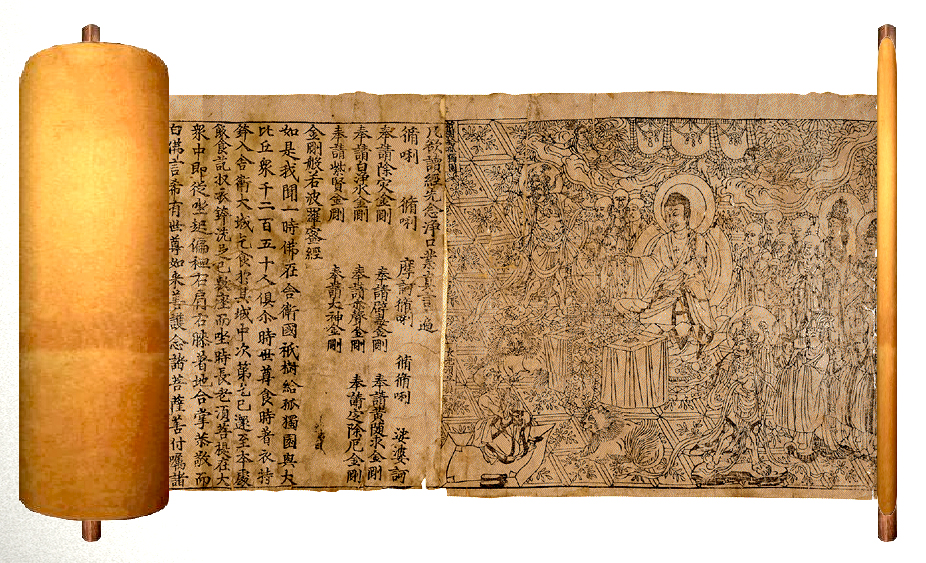Examining Dunhuang calligraphy through artistic analysis

A volume of Dunhuang Buddhist text reveals beautiful handwriting and pictures.
The art of calligraphy is full of spirit and humanity. It reflects the values of its time and nationality. Chinese characters are the main carrier of Chinese civilization. Calligraphy is how this is spread and created, so calligraphy plays a core role in the process of Chinese civilization.
Calligraphers utilize characters to present their feelings in brush and ink form. Dunhuang calligraphy records and captures the regional cultural features in the Dunhuang area. These characters convey the foundations of Dunhuang calligraphy in history and have exerted a far-reaching influence.
Dunhuang calligraphy reflects Dunhuang culture, and the genes of Dunhuang culture stem from Central Plain culture. Traditional Chinese Confucian culture along with local and exotic cultures merged and interacted with each other in the region, ultimately forming the Dunhuang culture.
There are many Dunhuang manuscripts. They consist of various language scripts, including ancient Tibetan, Tangut, Uighur, Khotan, Qiuci, Sogdian and Sanskrit, which show that the ancient Dunhuang area played an important role as a bridge between China and foreign cultures. Foreign exchanges during this time bore fruitful achievements under the influences of Buddhist, Central Asia and Persian cultures. In ancient times, the local social stability, economic development and the ideas of Central Plain culture boosted the prosperity of Dunhuang calligraphy.
Dunhuang calligraphy works provide historical data that demonstrates the transformation of Chinese characters into kai style. Moreover, some remaining volumes on calligraphy theory are not only extremely important calligraphy works, but also provide precious historical materials for the study of calligraphy theory as well.
Dunhuang calligraphy is the integration of various ethnic cultures and represents inclusiveness and diversity. It embodies aspects of the ancient Chinese economy, society and culture since the Jin Dynasty, and represents various ethnic groups’ unique ideas, values and local customs in Dunhuang and its surrounding regions. Dunhuang calligraphy inherits the diverse characteristics of Dunhuang culture and is an outcome of ancient Chinese and Western exchanges as well as the integration of politics, economics and culture.
Dunhuang manuscripts record different script forms, including seal, official, kai and running scripts, and have no lack of superb quality works compared to those of calligraphy masters.
Wang Mingshou is a council member of the Chinese People’s Calligraphy and Painting Academy.
